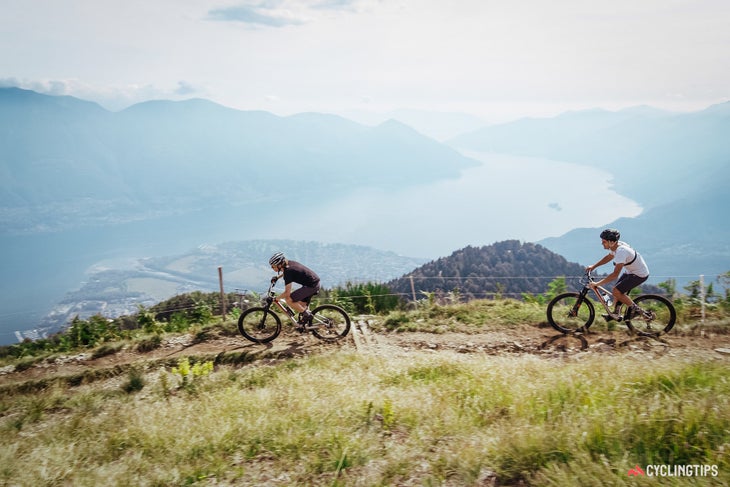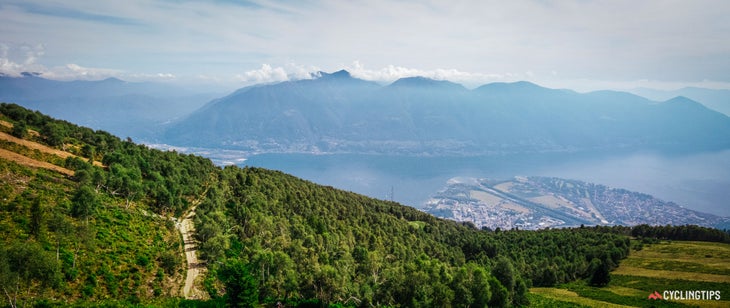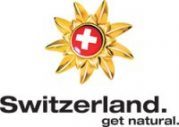
This content is brought to you by Switzerland Tourism. Find out more about our sponsored content policies here.
Text: Keir Plaice | Photography and video: My Media Sydney

Ticino, Switzerland’s warmest and sunniest canton, shares a border, a language, and a culture with Italy, as well as two magnificent lakes. Lago Maggiore and Lago di Lugano have long been favoured by the European beau monde for their turquoise waters and steep palm-lined shores, which are studded with pastel villages and villas with beautiful gardens.
Enjoying a lazy mid-morning espresso on the dock, amidst the bobbing speedboats and yachts in the marina in Lugano or Locarno has a certain Mediterranean feel, but Ticino’s still Swiss; the sidewalks are pristine, the shop windows are tidy, and even the supercars stop for old ladies, when they’re crossing the promenade with their poodles. Being Switzerland, the high mountains are never far away.
On the map, Ticino forms a rough triangle, with a broad base high in the Lepontine Alps, which narrows to a point just south of Mendrisio, 60 or so kilometres above Milan on the Lombard Plain. From Lugano, it’s less than 100 kilometres to the Gotthard Pass, in the canton’s far north, but a crow would have to flap over plenty of 3,000m summits to fly between the two. Alpine routes abound, which make for superb road cycling, but the quiet roads around the lakes, which corkscrew up and down through Instagram-perfect villages, can be just as savage. A long loop on a sunny day with a stop for pizza by the water is a ride you ought to be dreaming of.
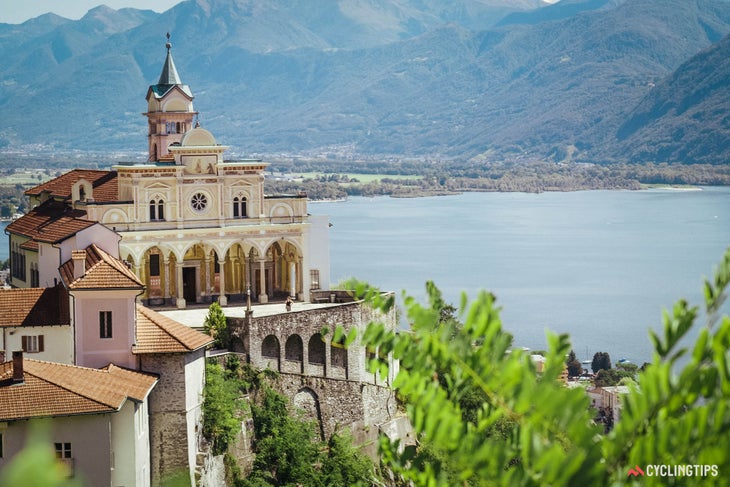
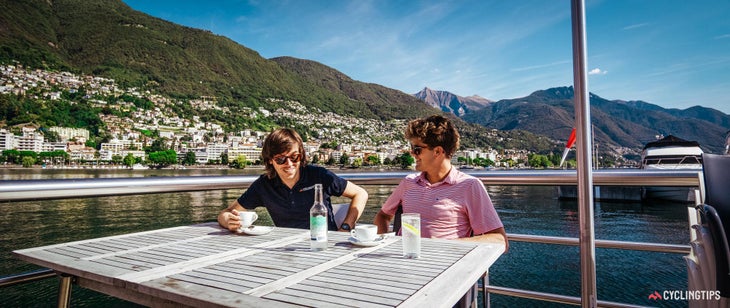
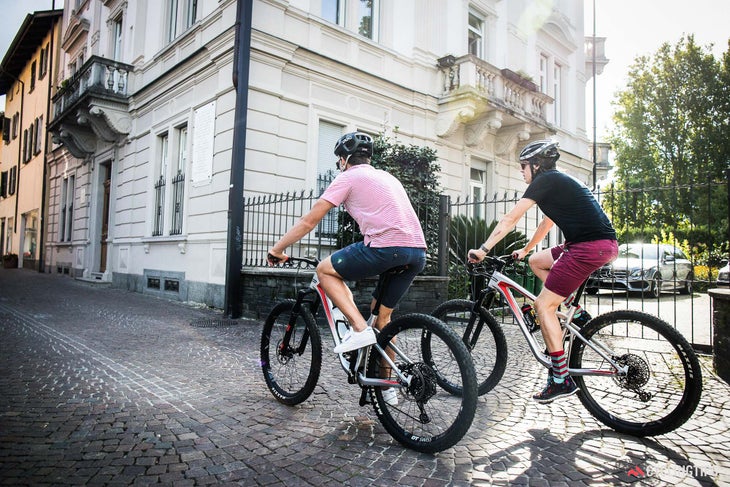
It’s off road where Ticino really comes into its own as a cycling destination though. Monte Tamaro, north of Lugano, offers challenging mountain biking for all skill levels, with trails that begin high above the tree line at 1,962 metres, before dropping through steep rock gardens onto long stretches of singletrack, where you can really let go of the brakes and fly through the woods. The architect Mario Botta’s wonderful Santa Maria degli Angeli chapel at the top of the cable car offers stunning lake views. From the peak of Monte Tamaro, you can admire Lago Maggiore; from the church you overlook Lago Lugano.
A few steps away from the church is the Restaurant Alpe Foppa, an alpine hut serving torta di pane and grappa—or gazzosa, the local fizzy drink, if you prefer. You’ll likely want to top up your stores of energy and courage before the run begins; Monte Tamaro has terrain to test even the best riders, having hosted World Cup downhills before, though there are easier trails too. Still, after a few goes up and down, you will be ready for a long soak in a hot tub and a gentle massage. The Splash & Spa Tamaro features several saunas and pools right at the bottom of the cable car.
In Locarno, your day of mountain biking can begin right in the city. Grab a coffee and take your bike up the funicular to Orselina, where you can jump onto the next cable car to Cardada, and then grab a chairlift up to the 1,671-metre summit of the Cimetta, where you’ll be rewarded with a spectacular view over the lake into Italy, and the Alps on the other side.
Then, the fast run back down to Locarno begins. The trail’s banked turns and loose sections of rock will offer a challenge to all sorts of riders – though whenever you need a break, you can always stop at one of the mountain restaurants along the way for a beer and a bite to eat on the patio, before getting back to it. Descending past the sanctuary of the Madonna del Sasso into Locarno at the end of the day, while the sun’s setting over the lake, is a magical experience. And you’ll be just in time for an aperitivo.
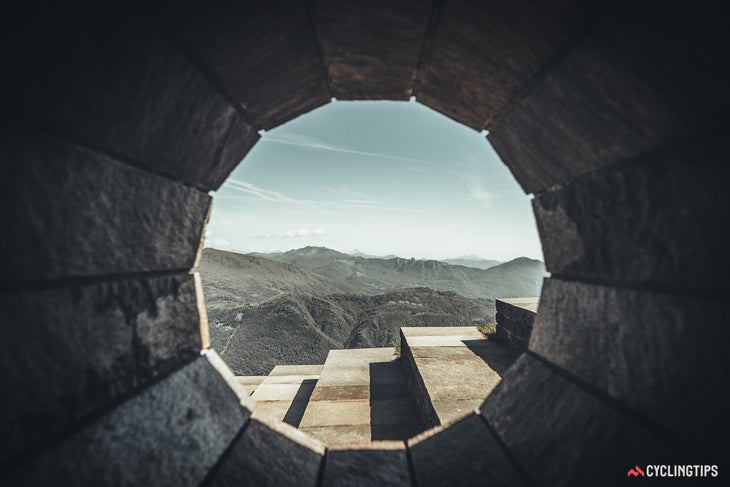
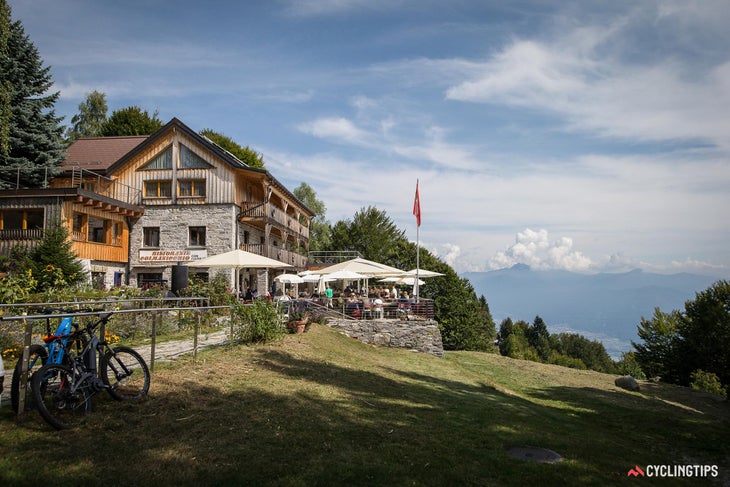
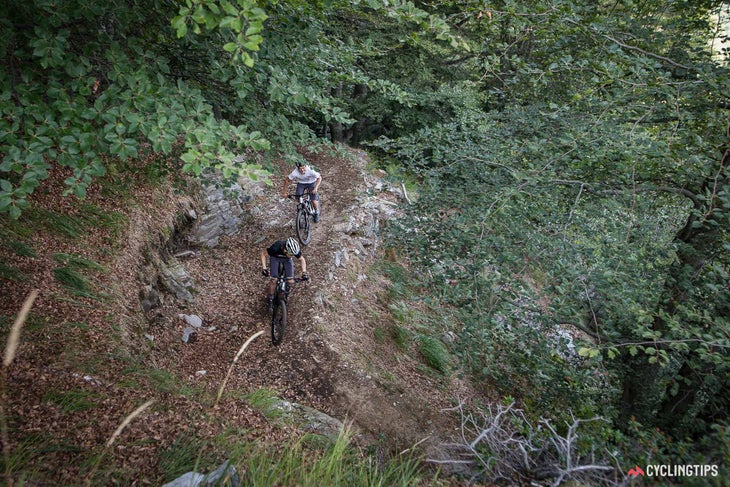
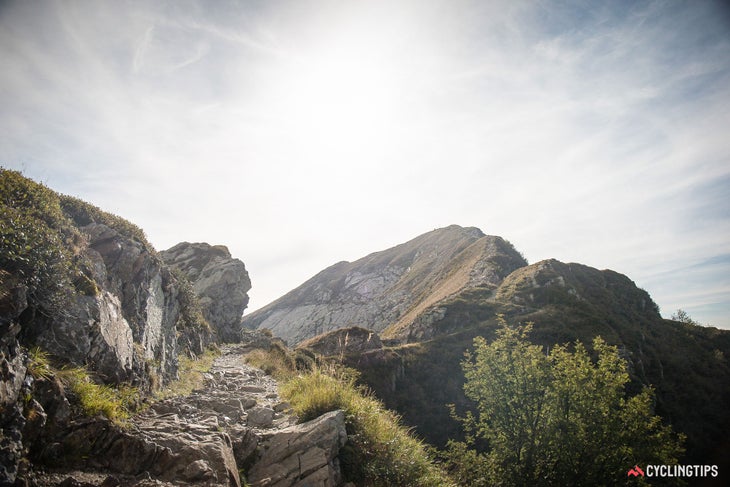
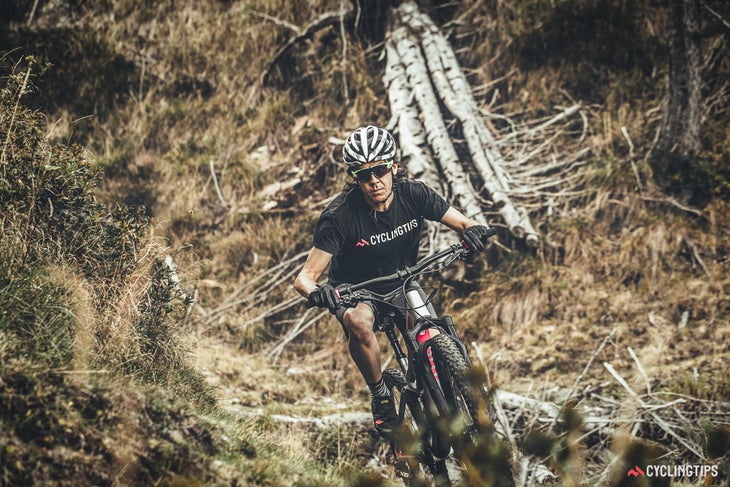
For dinner, good fare is not hard to find. The people of Ticino take pride in their food and drink and there are many excellent restaurants in the region, from grottos, which serve simple, hearty food, often outdoors, to fine dining rooms by the lakesides. The local wine is often very good indeed and is locally vinified in white Merlot.
While you’re in the region, Bellinzona, the canton’s capital, which is nestled at the foot of the Alps, is well worth visiting. Its three famous castles are a UNESCO World Heritage Site.
By car, the canton is accessed from the north via the Gotthard Pass, or the tunnel if the weather’s poor, you’re in a rush or are feeling less hardy. From Milan, it’s about a one hour drive north to the border. The canton is well-integrated into the Swiss rail network, especially now the Gotthard Base Tunnel—the deepest and longest train tunnel in the world—has been opened. There’s a small airport in Lugano with flights from Geneva and Zurich. The closest major international airport is Milan-Malpensa.
There’s a wide range of hotels catering to cyclists which are recognised by the label ‘Bike Hotels’, and Bike Shuttles Ticino can ferry you to the best trails in the region and provide all the local knowledge you could hope for.
Key info:
Ticino is a four-season paradise for cyclists, offering outstanding road cycling and mountain biking for all skill levels.
Discover more about cycling in the region at the region’s MTB site and cycling portal.
To plan your cycling holiday in Switzerland, visit MySwitzerland.com.
Across Switzerland, there’s an impressive network of cyclist-friendly Bike Hotels, specifically focusing on the needs of two-wheeled visitors.
Whilst in Ticino, we stayed at two Bike Hotels:
Hotel I Grappoli: Via ai Grappoli, 6997 Sessa
Hotel Belvedere Locarno: Via ai Monti 44, 6600 Locarno
During our time in Ticino, we ate at:
- Ristorante Alpe Foppa
- Ristorante Monte Lema
- Mountain Hut Cardada Cimetta
- Mountain Hut Lo Stallone
- Grotto al ritrovo
Ticino’s a stunning canton filled with impressive mountain vistas.
During our stay in the Lugano region, we particularly enjoyed the panoramic views from Monte Tamaro over the city of Lugano on one side and Lake Maggiore on the other.
The cable car of Monte Lema, at the end of the MTB trail from Monte Tamaro, and the downhill track Monte Tamaro-Rivera were also spectacular.
From Locarno, the funicular and sanctuary of Madonna del Sasso were our highlights, along with the Mario Botta cable car, which takes you to Mount Cardarda.
